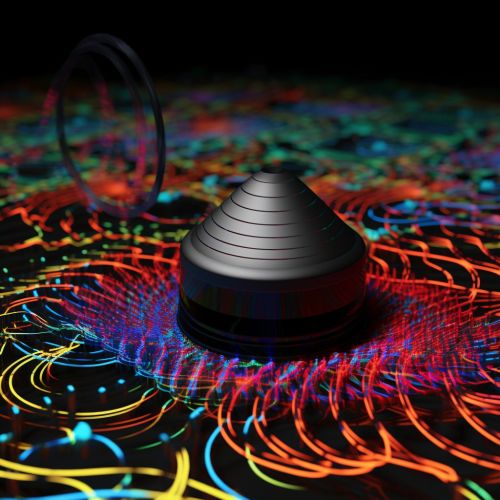Acoustic Imaging
Introduction
Acoustic imaging is a technique that uses sound waves to create images of an object or environment. This method is primarily used in the fields of medicine, geophysics, and nondestructive testing. It is a noninvasive and nondestructive method of imaging, which makes it ideal for applications where the object or environment being imaged cannot be physically accessed or altered.


Principles of Acoustic Imaging
The fundamental principle behind acoustic imaging is the propagation of sound waves through a medium. When a sound wave encounters a boundary between two different materials, some of the wave is reflected back towards the source, while the rest is transmitted into the second material. By measuring the time it takes for the reflected waves to return to the source, it is possible to determine the distance to the boundary. This principle is known as echo sounding and is the basis for many acoustic imaging techniques.
Applications
Medical Imaging
In the field of medicine, acoustic imaging is most commonly used in the form of ultrasound imaging. This technique uses high-frequency sound waves to create images of the inside of the body, allowing doctors to diagnose and monitor a wide range of medical conditions. Ultrasound imaging is often used during pregnancy to monitor the development of the fetus, but it can also be used to image organs, blood vessels, and other structures within the body.
Geophysics
In geophysics, acoustic imaging is used to map the subsurface structure of the Earth. This technique, known as seismic imaging, involves generating sound waves and measuring the time it takes for them to return after being reflected by different layers of rock. This information can be used to create detailed images of the Earth's interior, which can help geophysicists understand the processes that shape our planet.
Nondestructive Testing
Acoustic imaging is also used in nondestructive testing, a field that involves inspecting materials or structures without causing damage. This technique, known as acoustic emission, involves listening for the sound waves produced when a material is subjected to stress. By analyzing these sound waves, it is possible to detect defects or damage within the material.
Techniques
There are several different techniques used in acoustic imaging, each with its own advantages and disadvantages. These include pulse-echo imaging, through-transmission imaging, and phase-array imaging.
Pulse-Echo Imaging
Pulse-echo imaging is the most common technique used in acoustic imaging. In this method, a single transducer is used to both emit and receive the sound waves. The transducer emits a short pulse of sound, then waits for the echo to return. The time it takes for the echo to return is used to calculate the distance to the object, while the intensity of the echo provides information about the object's properties.
Through-Transmission Imaging
Through-transmission imaging is a technique that uses two separate transducers: one to emit the sound waves and one to receive them. This method provides higher resolution images than pulse-echo imaging, but it requires access to both sides of the object, which is not always possible.
Phase-Array Imaging
Phase-array imaging is a more advanced technique that uses an array of transducers to emit and receive the sound waves. By controlling the phase of the sound waves emitted by each transducer, it is possible to steer the beam of sound in different directions. This allows for more detailed and flexible imaging, but it also requires more complex and expensive equipment.
Future Developments
Acoustic imaging is a rapidly evolving field, with new techniques and applications being developed all the time. One area of active research is the development of new materials and technologies for transducers, which could improve the resolution and sensitivity of acoustic imaging. Another area of interest is the integration of acoustic imaging with other imaging modalities, such as MRI or CT, to provide more comprehensive information about the object or environment being imaged.
